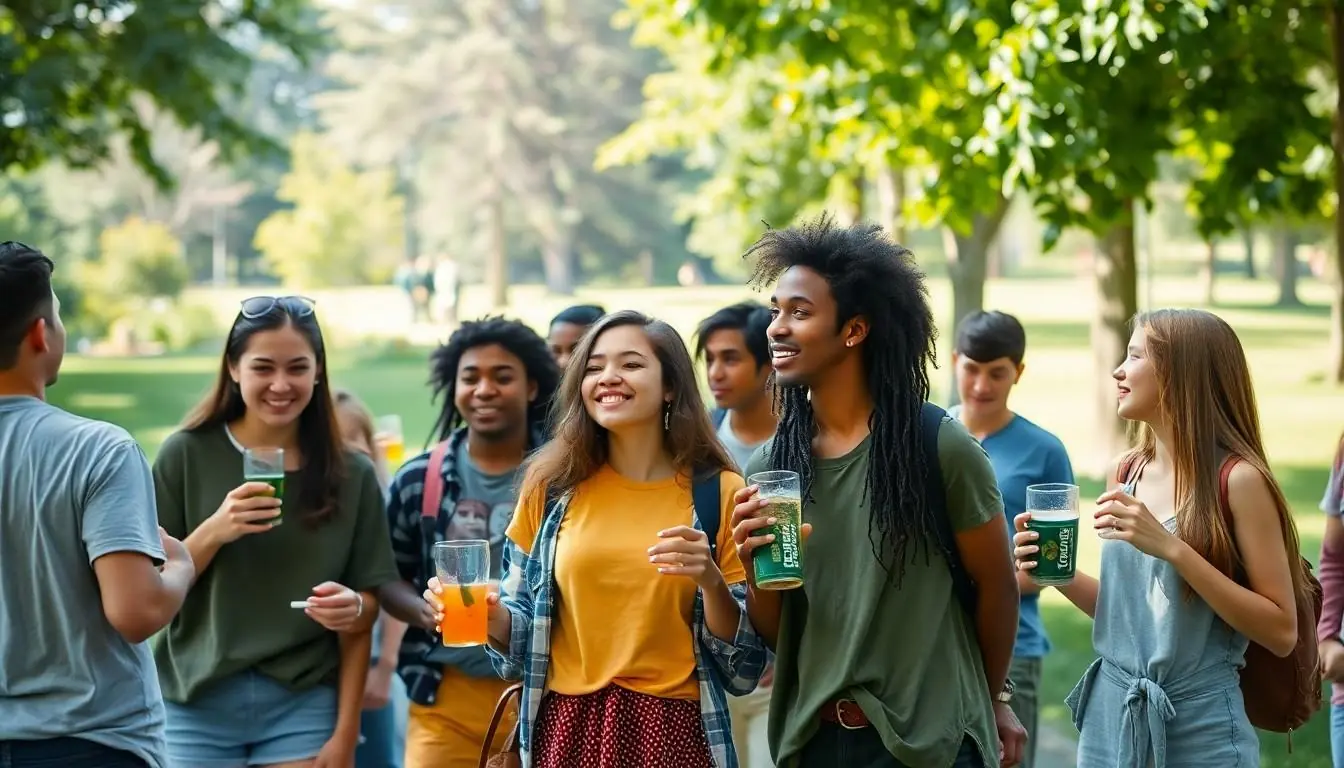Table of Contents
ToggleIn a world where happy hours and party scenes seem to dominate the lives of young adults, the results of a 2015 national survey might just surprise you. Picture this: a group of 18 to 25-year-olds, sipping on something other than cocktails, and embracing a lifestyle that doesn’t revolve around the bottom of a bottle. It’s not a mirage; it’s a reality that challenges the stereotype of youth and alcohol consumption.
This survey revealed a noteworthy percentage of young adults who proudly declared themselves as non-drinkers. So what’s the magic number? As we dive into the findings, prepare to be intrigued by the shifting trends in alcohol use among this age group. Who knew that some young adults prefer a refreshing soda over a stiff drink? Buckle up, because the results might just open your eyes to a new generation of sober socializers.
Overview of the Survey
In 2015, a national survey provided valuable insights into the alcohol consumption patterns among young adults aged 18 to 25. Approximately 30% of individuals in this age group identified as non-drinkers. This statistic challenges the stereotype that youth disproportionately engage in alcohol use.
Results indicated a significant shift in preferences, reflecting a growing trend toward healthier lifestyle choices. Many respondents reported favoring non-alcoholic options over traditional alcoholic beverages. For example, soft drinks, mocktails, and flavored sparkling water emerged as popular alternatives.
The survey’s findings also highlighted the reasons behind the decision to abstain from alcohol. Participants cited health concerns, personal values, and financial considerations as deterrents to drinking. These insights illustrate how priorities among young adults are evolving, as they opt for mindful consumption.
Data suggested that this trend may stem from broader cultural influences promoting sobriety and moderation. As social media platforms emphasize well-being and mental health, young adults become more aware of the ramifications of alcohol use.
This shift indicates an essential change in social norms surrounding drinking. With the rise of sober events and gatherings, young adults are redefining what it means to socialize in a non-drinking context. The survey sheds light on this emerging generation prioritizing different values and behaviors concerning alcohol consumption.
Key Findings

The 2015 national survey reveals noteworthy trends among young adults aged 18 to 25 regarding alcohol consumption. Approximately 30% of respondents identified as non-current alcohol users, indicating a significant shift in drinking habits within this demographic.
Percentage of Non-Users
About 30% of young adults reported abstaining from alcohol during the survey. This statistic challenges the stereotype that young adults predominantly engage in heavy drinking. Declining alcohol use among this age group underscores a movement toward healthier lifestyle choices. In fact, a growing desire for mindful consumption is evident, with many opting for non-alcoholic alternatives.
Demographic Breakdown
Survey data shows variations in alcohol use across different demographics. Gender plays a role, with men more likely to identify as drinkers compared to women. Additionally, geographic location influences these trends, as urban areas display higher non-user percentages than rural settings. Financial considerations and health consciousness contribute to these differences, highlighting how individual values shape drinking behaviors among young adults.
Implications of Findings
The findings from the 2015 national survey demonstrate significant shifts in young adults’ relationship with alcohol consumption. Approximately 30% of individuals aged 18 to 25 reported they abstained from alcohol, indicating a notable trend toward healthier lifestyle choices.
Health Effects on Young Adults
Health concerns play a major role in the decision to avoid alcohol among young adults. Alcohol consumption poses risks such as impaired judgment and addiction. Many young adults prioritize mental health and wellness, preferring to adopt a lifestyle that supports their physical and emotional well-being. Research shows that individuals who abstain from alcohol often experience better sleep quality and improved overall health indicators. Participants cited increased energy levels and enhanced productivity as benefits of avoiding alcohol. As a result, the trend towards non-drinking continues to gain momentum among this age group.
Societal Trends in Alcohol Consumption
Societal trends reflect changes in alcohol consumption patterns among young adults. Cultural shifts toward mindfulness and well-being influence these behaviors. Social media serves as a platform highlighting non-drinking options and sober events, reshaping perceptions of social gatherings. Urban areas report higher percentages of non-drinkers compared to rural regions, suggesting environmental factors impact drinking behaviors. Additionally, peer groups foster an environment that values moderation and alternative recreational activities. This evolving dynamic contributes to a redefining of social norms surrounding alcohol consumption among young adults.
Factors Influencing Alcohol Use
Multiple factors contribute to the alcohol consumption patterns observed among young adults. These influences shape decisions about drinking in significant ways.
Peer Influence
Peer influence plays a crucial role in shaping drinking behaviors. When young adults engage in social settings, their friends often dictate the norms around alcohol consumption. Many individuals cite their social circles as key motivators for drinking or abstaining from alcohol. Non-drinking friends can create a supportive environment that encourages healthier choices. Conversely, a group that prioritizes drinking can pressure others to partake. As a result, peer dynamics heavily influence whether young adults identify as drinkers or non-drinkers. Ultimately, the desire to fit in or stand out shapes individual choices.
Accessibility and Availability
Accessibility and availability of alcohol impact its consumption rates among young adults. Alcohol is often readily available in various settings, including convenience stores, bars, and restaurants. Increased accessibility can lead to higher consumption rates, especially if drinking is normalized in social scenarios. However, regions with stricter alcohol regulations or fewer establishments selling alcohol may see lower consumption levels. Young adults’ choices reflect their surrounding environment. Additionally, non-alcoholic options are increasingly available in many venues, allowing individuals to choose alternatives easily. These factors significantly affect the overall drinking trends within this age group.
The findings from the 2015 national survey reveal a transformative shift among young adults regarding alcohol consumption. With around 30% of individuals aged 18 to 25 identifying as non-drinkers, it’s clear that health and wellness have become central to their lifestyle choices. This trend signifies a broader cultural movement towards mindful consumption and prioritizing mental health. As social norms continue to evolve, young adults are redefining their social experiences, opting for non-alcoholic alternatives and fostering environments that support healthier choices. The implications of these changes extend beyond individual preferences, suggesting a significant impact on future societal attitudes towards drinking.



